The Public Arts are becoming increasingly important in urban development. This project addresses public art as one of the major groups of elements in the urban built environment. The goal of this study is to design a digital platform through which citizens can co-create and discuss the urban built environment by sharing virtual artworks installed in urban spaces. More specifically, this study explores how user experience design can facilitate citizens’ participation in co-creating artworks within their environment. In fact, this investigation seeks to reach the highest level of citizen participation, which is citizen control. The sharing platform will encourage citizens to think about their surrounding environment and add artworks that make the space better. More important is the fact that these new works of art create a dialogue amongst citizens, and different social interaction may accrue around them over time.
These public artworks will be virtual, digital works. People can easily create them in various free software such as Google Sketch up. Through this sharing system, they can locate their very own virtual, digital artwork in places in the city and share it with other citizens. A smart-phone application is designed to facilitate different user groups and their experiences.
This smart-phone application supports two main user groups that may have different experiences with the interface. First, there are regular users that have limited experience with the artworks. Second, there are users who are creators and want to share their work with other people. This user group needs features to add models and locate them in desired places in the city. Diagram 15 shows the information architecture and task flows of this smart-phone app.
These public artworks will be virtual, digital works. People can easily create them in various free software such as Google Sketch up. Through this sharing system, they can locate their very own virtual, digital artwork in places in the city and share it with other citizens. A smart-phone application is designed to facilitate different user groups and their experiences.
This smart-phone application supports two main user groups that may have different experiences with the interface. First, there are regular users that have limited experience with the artworks. Second, there are users who are creators and want to share their work with other people. This user group needs features to add models and locate them in desired places in the city. Diagram 15 shows the information architecture and task flows of this smart-phone app.
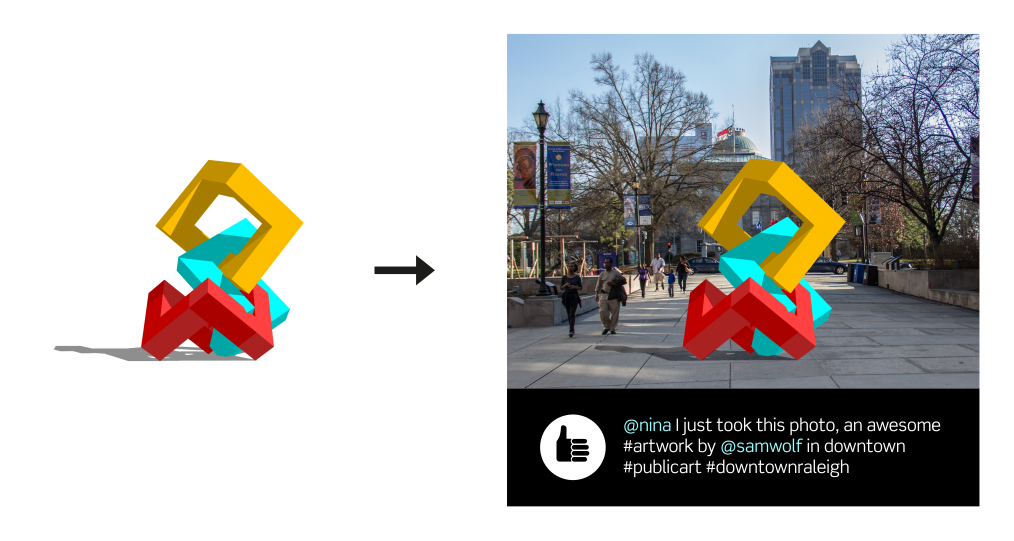
The user may create virtual artworks in various softwares that support 3D representation and have features for assigning different materials and lightning.

Diagram of Design Process
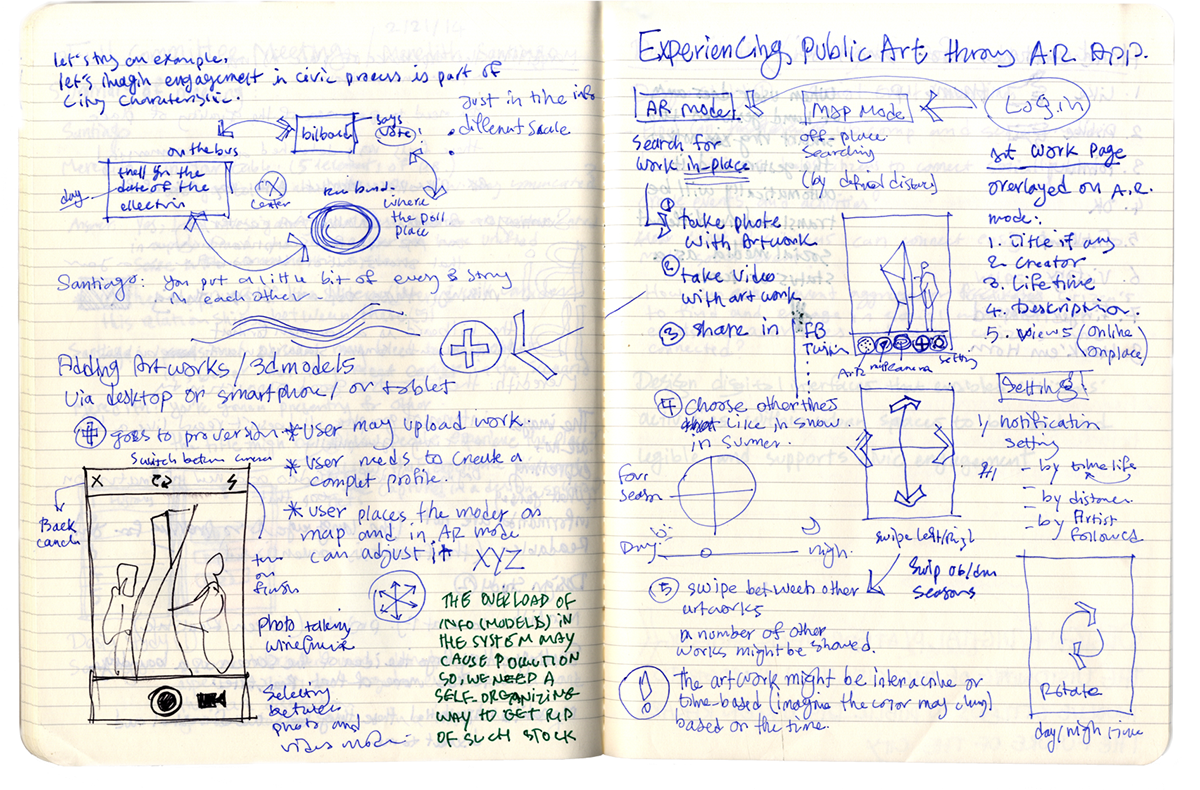
Initial Skteches

Digital Platform-Task Flow

Smart-phone app, information architecture diagram
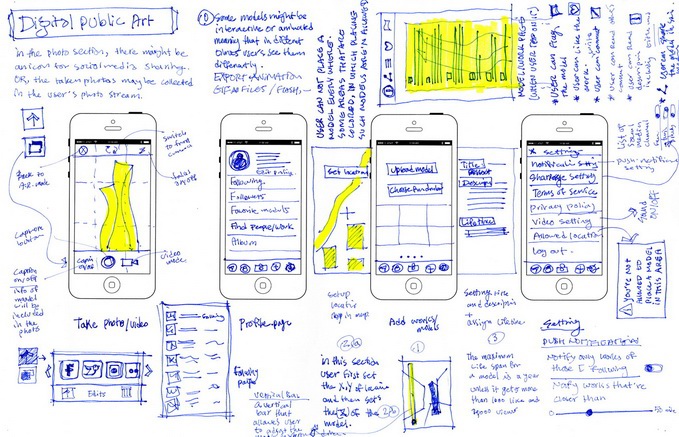
Wireframing Skteches
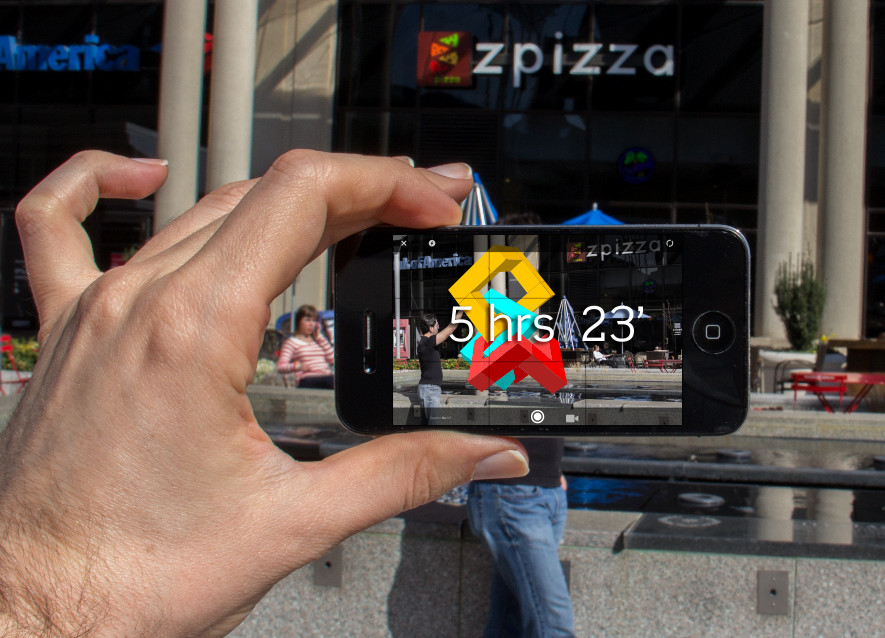
Artworks have a limited lifetime. Users of the app receive notification when an artwork is getting close to its end.

Uploading an artwork to system in professional version
The user first has to upload his virtual model to one of file hosting services that have cloud storage (e.g. Dropbox, Google Drive). The app acquires the model form the hosting service and the user should then place it in a location in the city map. Areas that are highlighted in yellow color are places that users are not allowed to place any artwork.
The user first has to upload his virtual model to one of file hosting services that have cloud storage (e.g. Dropbox, Google Drive). The app acquires the model form the hosting service and the user should then place it in a location in the city map. Areas that are highlighted in yellow color are places that users are not allowed to place any artwork.
If user places an artwork in yellow areas, a push notification appears to inform user that placing an artwork is not allowed.

After placing the artwork, users author an artwork’s page. This page will be visible to all in the system. Through this page, other users can like or share the artwork, see information such as artist’s name, the title, the number of views, and a description.
Users also can write comments about an artwork in its page.
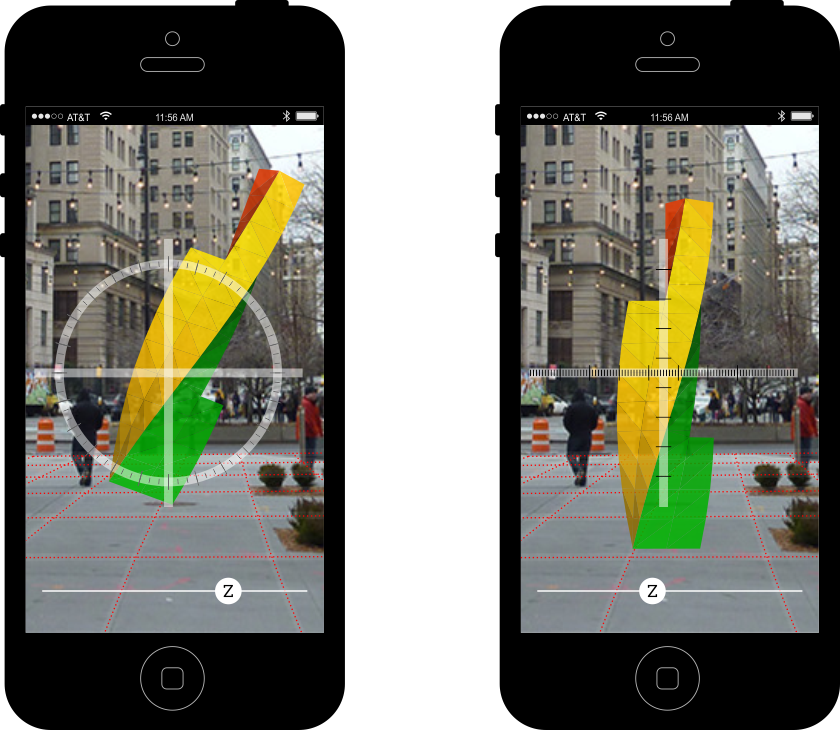
Users in a pro version can move their artwork on an X,Y, or Z axis.
Users in a pro version can rotate their artwork around an X,Y, or Z axis. In addition, a grid of (red lines) will show up in this step as a guide for the user.

User interface design, taking photos with virtual artworks

User can swipe up or down to see how the artwork changes over a year. For example, the artwork might be in different color in winter.

User can swipe left or right to see how an artwork changes over a day.


